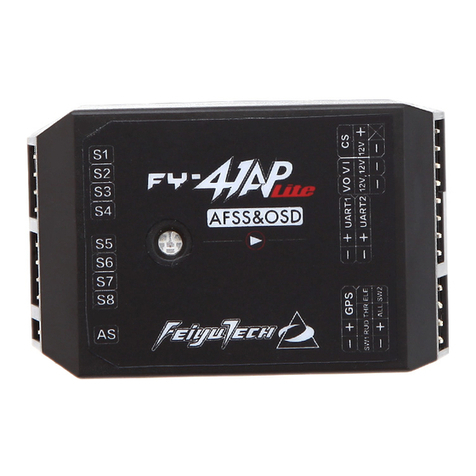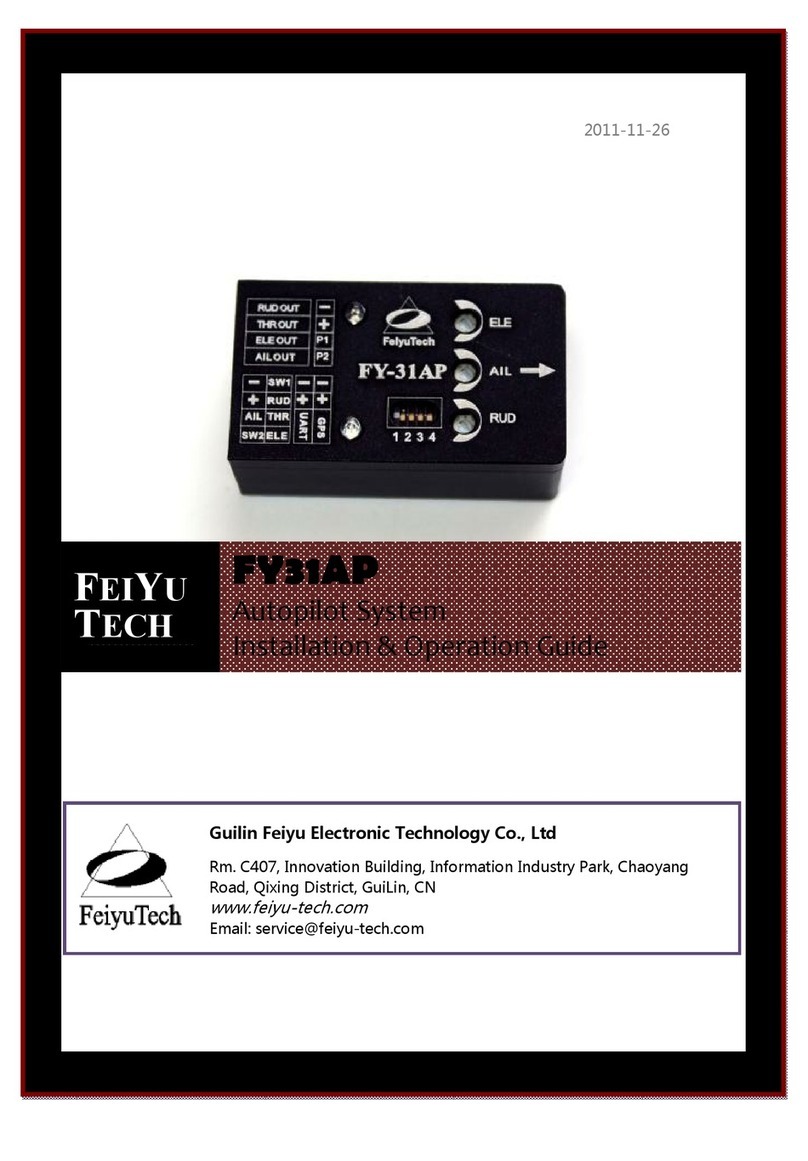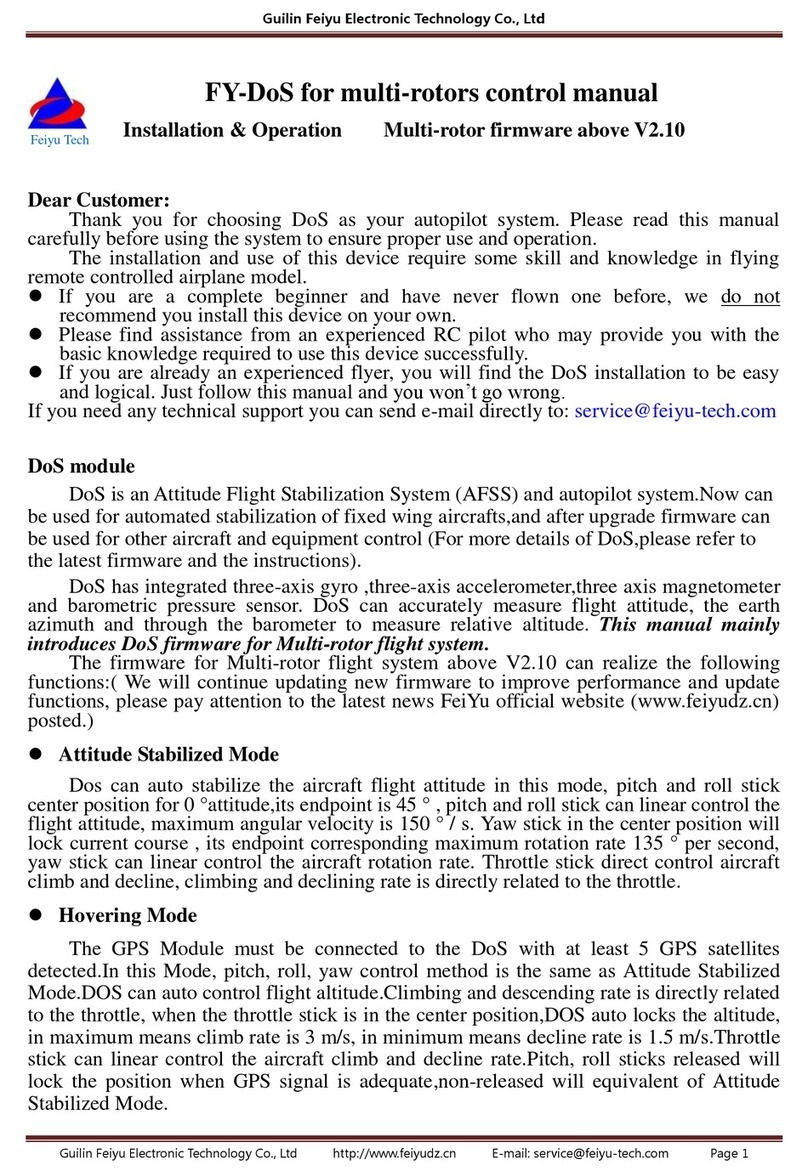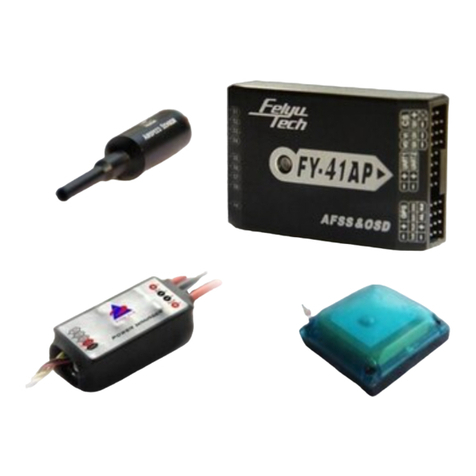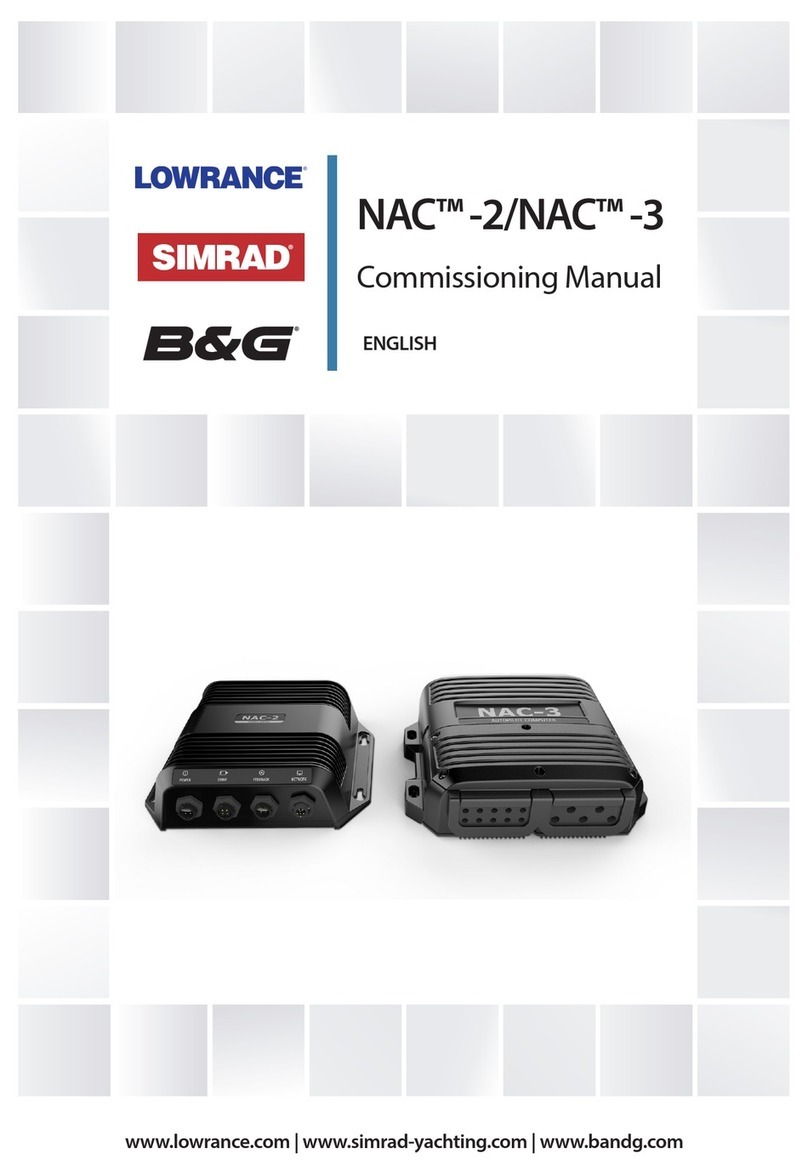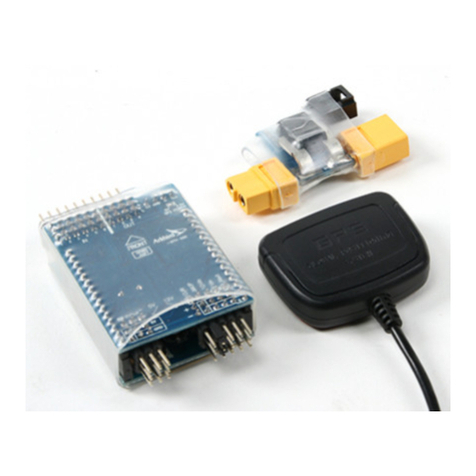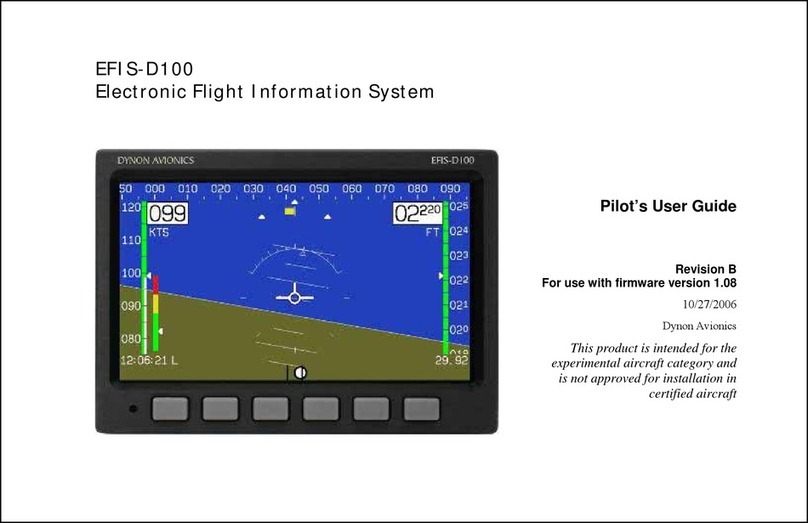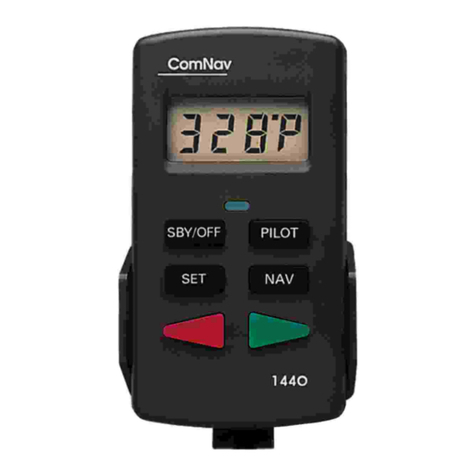FeiYu Tech PANDA User manual

FEIYU
TECH
PANDA
GCS &AFSS AUTOPILOT SYSTEM
INSTALLATION & OPERATION MANUAL
Guilin Feiyu Electronic Technology Co., Ltd
Addr : Rm. C407, Innovation Building, Information Industry Park, Chaoyang
Road, Qixing District, GuiLin, CN
Website: www.feiyu-tech.com
Email: service@feiyu-tech.com

Guilin Feiyu Electronic Technology Co., Ltd
Guilin Feiyu Electronic Technology Co., Ltd http://www.feiyudz.cn Email:feiyudz@yahoo.cn
1
Dear Pilot,
Thank you for purchasing the PANDA Full Function Autopilot with GCS & AFSS from FeiYu
Tech. In order to achieve full potential and safe operation of this product, please carefully read
this manual prior to installation.
Attention:
The installation and use of this autopilot require advance skill and knowledge in flying remote
controlled fixed wing aircraft, the operations of amateur autopilot system and ground control
station (GCS).
If you are a complete beginner in autopilots, we do not recommend you install this
system on your own.
Please find assistance from an experience flier who may provide you with the basic
knowledge in autopilot systems to ensure successful installation and safe use of this
device. Alternately, you may gain experience by using our PANDA first.
If you are already an experienced pilot and have used autopilot systems before, you
will find this step by step manual intuitive and logical. Just follow the instructions
as stated very carefully and you won‘t go wrong.
PANDAAutopilot: User Agreement
a) The PANDA autopilot system complies with all regulations within the People’s Republic
of China (PRC).
b) It is the end user’s responsibility to ensure compliance to regulations in their own country
if the PANDA is used outside of the PRC.
c) PANDA autopilot system is prohibited to be used for any illegal activity. It is the end
user’s responsibility to take all safety measures in using this product.
d) The Guilin Feiyu Electronic Technology Co. (herewith known as Feiyu Tech) and our
associates are not responsible for any damages or liabilities caused by the use of this
product.
e) The PANDA is internationally patented. It is unlawful to reverse engineer, copy or modify
this product in any way.
f) Feiyu Tech reserves the right to update, upgrade or modify the product at any time as we
see fit. We will to the best of our abilities inform existing users if such updates need to be
carried out in units already in use.
g) Feiyu Tech reserves the right to amend this manual and the terms and conditions of use of
the PANDA at any time.
h) By using this product you agree to these terms and conditions effective on the date of
purchase.
Please do not hesitate to e-mail us directly for assistance: service@feiyu-tech.com

Guilin Feiyu Electronic Technology Co., Ltd
2
PandaAutopilot
Introduction: What it Does
PANDA is an advanced autopilot with patented Attitude Flight Stabilization System AFSS™ that
allows you to view and change in real time the flight parameters of your flying aircraft via your
Ground Control Station (GCS).
The parameters include (but are not limited to);
Waypoint setting while in flight,
Automated altitude control,
Ground speed control,
Activation of circling at given points,
Control of circling radius,
Automated Return to Home (RTH),
Automated take-off according the route setting.
Real time telemetry data transmitted to the GCS include:
Main battery voltage and mAh consumed,
GPS signal strength,
Plane attitude flight stabilization system (AFSS) status,
All parameters as shown on the On Screen Display (OSD)
With the PANDA, autopilot flight via the GCS has never been simpler.
Aircraft Suitability
1. Normal / Traditional fixed-wing planes
2. Delta-winged plane with rudder
3. Delta-winged plane without rudder
4. Plane without aileron
5. V –tail plane with and without aileron

Guilin Feiyu Electronic Technology Co., Ltd
3
MajorAuto Pilot Components
1. PANDA provides high-precision flight attitude measurement and control through the
utilization of an integrated 32 bits microprocessor, GPS receiver, three-axis MEMS gyros,
three-axis accelerometer, three-axis magnetic sensor, accurate barometric pressure sensor,
attitude algorithm, Kalman filtering and data fusion algorithms.
2. Combined the attitude module and the control module, get more small volume and lighter
weight.
3. Realize auto take off and auto land, maximum reduce the operating pressure.
4. Can accord to the plane internal space to adjust the install direction , easier to complete the
connection.
5. 10Hz data rate GPS receiver, 35 seconds fast positioning time and accuracy of 2.5 meters
CEP. The GPS can record the positional parameter with battery , the locating time greatly
improved.
6. 100HZ inner attitude control, 10HZ outer navigation control.
7. Multi-channel mixed-control output can be adjusted with ease. The control options include:
a) Elevator and rudder navigation
b) Elevator, aileron and rudder navigation
c) Elevator and aileron mixed-control (elevon) navigation
d) V-tail rudder may be used, however a third party mixer have to be supplied by the user.
8. Three control modes:
a) Manual Mode ;
b) AFSS activated (Active Stabilization) ;
c) Automatic navigation control.
9. Two automated navigation control modes:
a) Air route navigation mode ;
b) Mouse controlled flight mode.
10. Three special flight modes:
a) Fixed circling mode;
b) Auto Return to Home (RTH) mode;
c) Auto take-off mode.
11. Any standard RC transmitter and receiver can be used with this system.
12. Automated RTH (Return to Home) protection when there is a break in GCS communication
link via the data radios. This time the system is working only in the data radio control mode.
13. Panda can Integrated automatic and manual aerial photography triggering. Equidistance or
Timing taking photo. Combine with the POS data record module can record the current flight
attitude info of the taking photo point, for example the Longitude, latitude, altitude, speed,
etc .The GCS software helps integrate Automated and Manual flight control modes in an easy
to use display interface.
14. The GCS software includes electronic map formatting. By using the electronic map, aircraft
route and tasks can be modified in real-time via your GCS computer.
15. Real time display on the GCS includes flight parameters such as main pack voltage, mAh
consumed, Amp draw, GPS satellite strength and temperature of the autopilot unit.
16. All flight parameters are downloaded automatically by the GCS for instant playback.

Guilin Feiyu Electronic Technology Co., Ltd
4
17. IMPORTANT: GCS Function
When using the Data Radio to control the aircraft, the controlling signals from the RC
Receiver is directly sent to the Remote Adapter and converted to digital signals. The Data
Radio will then upload the commands to your aircraft via the data radio.
The GCS is only used to monitor telemetry and flight status of the aircraft. Transmission
of commands is minimal. i.e. the aircraft is mainly controlled by your RC Transmitter.
The autopilot still can realize most of the functions (for example, air route setting, RTH,
circling) without the GCS.
18. Support the firmware update, can update by yourself.
Technical parameters
Table 1: Unless specified, values are at operating temperature of 25 ℃.
Component
Min
Value
Standard
Value
Max
Value
Units
Remark
Main Supply Voltage
4.0
5
6.5
Volt
Main Supply Current
60
mA
At 5V supply
voltage
Altitude Measurement Range
-500
6000
Meter
GPS Ground Speed Measurement
Range
0
350
Meter/Sec
GPS Horizontal Navigation
accuracy
2.5
Meter
Repeat Precision
Barometric Pressure Altitude
accuracy
2
Meter
Repeat Precision
Waypoints setting
98
98 point
programmable
Rudder Servo
3
Channel
Throttle Channel
1
Channel
Servo Output Frequency
1
µS
Updated Servo Frequency
50
Hz
Flight status PID Control Rate
100
Hz
Navigation Control PID Rate
10
HZ
Data Telemetry‘s Track Frequency
1
Hz
Maximum 10Hz
Data Telemetry‘s Mission
Frequency
1
Hz
Maximum 10Hz
Data Telemetry ‗s Flight Status
frequency
1
Hz
Maximum 10Hz
RS-232 Baud Rate
19200
Bps
TTL Level
Operating Temperature
-20
25
60
℃
Temperature
25
℃

Guilin Feiyu Electronic Technology Co., Ltd
5
Controller Module dimension
60×3 1×20
mm
Panda autopilot
module
Weight
35
grams
Remote Adapter Module
Dimension
52×3 1×20
mm
Panda remote
adapter module
Weight
27
grams
GPS Module dimension
32×32×10
mm
GPS module
Weight
21
grams
PANDA INSTALATION
1. Before installation, please check and ensure your PANDA pack contains the following main
components:
a. Panda Autopilot module
b. Panda Remote adapter module
c. GPS module
PandaAutoPilot Module
Panda Remote Adapter Module

Guilin Feiyu Electronic Technology Co., Ltd
6
GPS Receiver Module
2. Optional components:
a. OSD Video overlay modules
b. Current sensor
c. Data radio module
d. Other fittings
FY-602Data Radio (433MHz) FY-606 Data Radio (2.4GHz)
Note: Data Radio selection please refer page 7
FLIGHT CONTROLLER MODULE INSTALLATION
FLIGHT CONTROLLER MODULE
1. The Autopilot module must be placed horizontally and as close as possible to the plane‘s CG
(Center of Gravity). The default direction is the arrow direction must be pointing towards the
nose of the plane (i.e. direction of flight). You can change the direction to four directions via
the GCS software, i.e direction forward, back, left, right (shown below) .

Guilin Feiyu Electronic Technology Co., Ltd
7
2. When installing the autopilot module please make use of the supplied damper mount.
Otherwise the vibrations will cause a large data inconsistencies which will adversely affect the
autopilot accuracy.
3. PANDA autopilot integrates a GPS module including a flat-GPS passive antenna. This is a
sensitive antenna for GPS signals, while false signals reflected from the ground is effectively
filtered out. Install the GPS unit horizontally.
4. Keep metal objects and other conductive materials such as carbon fibre away from the GPS
unit. Additionally no transmitting antenna should be around the GPS antenna. The
communication link antenna (FY-606) or your video transmitter should be kept as far away
from the GPS unit as possible.
5. Radio transmissions will increase the noise signals which lead to instability in the positioning
data. The higher the radio noise, the more difficult for the GPS to lock in position.
6. PANDA can integrate with either one of Feiyu Tech‘s two Data Radio modules, the FY-606
(2.4 Ghz) or the FY-602(433 mHz).
7. The Data Radio uplink is responsible for receiving flight navigation data from the GCS. At
the same time, the Data Radio also transmits flight status and other remote sensing
information back to the GCS. The asynchronous serial interface protocol between PANDA
autopilot and communications link is RS232-TTL level, the baud rate is 19200.
8. Place the Data Radio module as far as possible away from the GPS module, AHRS, GPS and
servos in order to avoid interference to these equipments. The Data Radio antennas should be
installed vertically upward or downward.
9. The Data Radio communication link range depends on your specific application. If your
aircraft will only be operated within a 5km radius then the FY-606 radio modem will be
Four install directions of the Autopilot module
AutoPilot module the arrow forward(default direction)
AutoPilot module the arrow
towards to left
AutoPilot module the arrow
towards to right
AutoPilot module the arrow
towards to back
nose of the plane

Guilin Feiyu Electronic Technology Co., Ltd
8
sufficient. If you wish longer range then the FY-605 radio modem should be selected.
10. Also consider your Data Radio frequency selection based on your existing radio control
system, to avoid frequency interference.
11. Alternately, you can utilize your own full duplex data modem. The communication link used
by PANDA autopilot can be either a half-duplex or a full-duplex data modem.
12. Warning: Certain frequency bands from the Data Radio (e.g. 433 mHz) can interfere with
servos due to electromagnetic emission. To resolve this issue either avoid placing the Data
Radio transmitter close to sensitive components or use a magnetic core (as shown below) to
reduce the interference.

Guilin Feiyu Electronic Technology Co., Ltd
9
Defined Interface of the PANDA Flight Controller Module
Autopilot module interface pins:
Front row pins defined:
8
7
6
5
4
3
2
1
NO.
GND
VCC
TX1
RX1
Switch
input 1
Rudder
input
Throttle
input
Elevator
input
Ⅰ
GND
3.3V
TX2
RX2
GND
VCC
Aileron
input
Switch
input 2
Ⅱ
GND
5V
DL
DY
Ⅲ
NOTE: The pin “ Ⅱ-5,6,7,8”is for the GPS module, “Ⅱ-7”pin output +3.3V, “Ⅲ- 5,6,7,8”is
for the Current sensor , “Ⅲ- 7”pin is +5V output, please don’t supply to these pins, or will
burn the autopilot .
The output 1 is corresponding with the input of CH7 in the remote adapter.
Signal
+5V
GND
P6
P5
P4
P3
P2
P1
AD
P7
Parachute open
OUT
External voltage
acquisition
AIL OUT
ELE OUT
THR OUT
RUD OUT
Take photo OUT
Output 1
UART port
GPS port
CS port
Receiver signal input port

Guilin Feiyu Electronic Technology Co., Ltd
10
Autopilot Module:
Serial port 1(UART port)
Baud rate: 19200
Data bits: 8
Stop bits: 1
Parity: None
TX1 connected to the RX ‗s data radio
RX1 connected to the TX ‗s data radio
Serial port 2(GPS port)
Baud rate: 38400
Data bits: 8
Stop bits: 1
Parity: None
TX2 connected to the RX ‗s GPS module
RX2 connected to the TX ‗s GPS module
Autopilot module the interface defined and function:
Name
function
UART port
Connect to the data radio
GPS port
Connect to the GPS module
CS port
Connect to the Current sensor
Receiver signal input port
Connect to channels of the receiver
AD
The external voltage acquisition port
P1
Connect to the aileron or mix-control servo 1
P2
Connect to the elevator or the mix-control servo 2
P3
Connect to the throttle or control wiring of the ESC
P4
Connect to the rudder
P5
Connect to the taking photo port of the camera
P6
Directly output the CH7 servo signal of the remote adapter module
P7
Output a servo signal which can be controlled directly by the GCS
software
Autopilot module taking photo port instruction:
The P5 port of the autopilot module output a camera shutter triggered signals, this signal is TTL
level(0-3V), you can set this signal to high level trigger or low level trigger via the GCS software.
The default is high level trigger, that is in normal this output signal is low level, but when taking
photo this port will output a high level signal last for 1 second.
Autopilot Module LED indicator instruction:
Flight
mode
Auto balance
mode
Deactivated
mode
Path navigation
mode
Auto return to
home mode
(RTH)
Auto circling
mode(ACM)
LED light
indicator
Stay on solid
Continuous
flash
Continuous
flashing 3 times
each loop
Double flash
each loop
Single flash

Guilin Feiyu Electronic Technology Co., Ltd
11
Connection Diagram
GPS
Data radio
Task servo 2
Task servo
Rudder servo
Voltage detected
(current sensor)
Aileron servo
Elevator servo
Throttle servo
VCC
GND
Receiver
External voltage
collecte
Camera
Can power up via any
free vcc port

Guilin Feiyu Electronic Technology Co., Ltd
12
Panda RemoteAdapter module interface:
Name
Function
RADIO
Connect to the data radio
PC
Connect to the PC serial port
AIL
Aileron input
ELE
Elevator input
THR
Throttle input
RUD
Rudder input
CH5
Channel 5 input
CH6
Channel 6 input
CH7
Channel 7 input
CH8
Channel 8 input
The CH7 of the Remote Adapter module can adapt a receiver signal to the autopilot
module, and the autopilot module output it via its P6 port.
+5V
GND
TX2
RX2
+5V
GND
CH5
THR
+5V
GND
AIL
CH7
ELE
RUD
CH6
CH8
TX1
RX1
RADIO
PC

Guilin Feiyu Electronic Technology Co., Ltd
13
Connection Diagram
The interface and features of the GPS module
TX: For Data transmission to the Autopilot module (RX2)
RX: For Receiving data transmitted from Autopilot module (TX2)(Can disconnected )
Interface Features: TTL level
Baud rate: 38400
Data bits: 8
Stop bits: 1
Parity: None
GPS Data refresh rate: 10Hz
电流传感器:
PC serial port
RC Receiver
5V battery
GND
+
Balck - -GND
Red --- +3.3V
Green —signal
Data radio

Guilin Feiyu Electronic Technology Co., Ltd
14
Current Sensor:
PANDA Power Supply
1. To ensure uninterrupted autopilot function, it is critical that your power system outputs a
stable and clean 5 volt power source to the PANDA system.
2. To avoid current fluctuations, ideally the power source supply to the servos should be
separate from the autopilot.
3. If the power source for the Autopilot system and servos are the same, then we highly
recommend a battery or BEC supply with higher than 3 amps output. Do check this rating
especially if you are using your ESC‘s internal BEC supply as some ESC BECs are not rated
for 3amp output.
4. We highly recommend a separate power source for the autopilot system from the receiver
and servos, as this has shown to produce the best results.
AUTOPILOT CONNECTION OPTIONS
There are three options when setting up your PANDA system. Please review them all and choose
the one that best suits your needs.
Option 1: Ground Station Controlled Flight
a) In this option, your aircraft is controlled only by the Data Radio (Figure 2). With this
setup you do not have a RC receiver in the plane (Figure 1).

Guilin Feiyu Electronic Technology Co., Ltd
15
a) Your RC Receiver is installed at your ground station. The Receiver servo signal output is
fed into the Remote Adapter.
b) The signals received by the Remote Adapter will be converted to digital signals. The Data
Radio system then up-loads these digital commands to your aircraft.
c) The uploading of data to the aircraft does not involve the GCS. The GCS is only used to
monitor telemetry and flight status of the aircraft. GCS involvement in
fight control is minimal.
d) Warning: In Option 1, the Data Radio range will dictate your flight range. Additionally,
due to the digital signal conversion and processing, some delay in manual control
transmission will occur. Refer page 7 on notes on data transfer frequency (Hz).
Figure 1: On the aircraft, the radio
modem controls all flight parameters.
No RC receiver is installed in your
aircraft.
Figure 2: At your ground Station, the
signals from your RC Transmitter is
sent to the RC Receiver which is
connected to your computer via the
Remote Adapter.

Guilin Feiyu Electronic Technology Co., Ltd
16
OPTION 1: ON BOARD AIRCRAFT DIAGRAMME
OPTION 1: ADVANTAGE
Option 1 will make on board installation easier since the RC Receiver does not need to be
installed on board.
You save on weight and installation area.
The entire radio and autopilot settings can be carried out at the Ground Station without
involving the aircraft.
Only a 6 channel receiver is required.
Also at least two of the channels require a three-position switch.
OPTION 1: WARNING
If you choose to use the 5.0 volt power from your ESC BEC, you can plug the throttle
control wire directly into the ―THR‖ port. However please ensure that your ESC internal
BEC can supply a minimum of 3.0 A current. We highly recommend that you have an
external BEC instead.
The 5.0 volt External BEC power input is connected to the +5V Pin of the P6 Port, and
the GND.
OPTION 1:Activation and Deactivation of safety feature
When the plane is controlled by the remote adapter board, it contains a communication
interruption protection function.
If the autopilot detects communication interruption lasting 10seconds or more, it will
enter into auto return mode and come safely home. This is the Default setting.
You can however deactivate this Safety Feature if you so wish. One reason to for
GPS module
Data radio
AIL Servo
RUD Servo
THR Servo
ELE Servo
5V servo battery

Guilin Feiyu Electronic Technology Co., Ltd
17
deactivation is that the aircraft will continue flying the set route even without Data Radio
communication. This way, it can complete its flight mission fully autonomously. Of
course it would make sense to have the mission end at the base station so you won‘t lose
your plane!
RTH DeActivated:choose ―Para Settings‖—> ―Flight Para‖, click ―RTH Deactivated‖,
when the button turn green, meaning you have set successfully. Shown as above:
OPTION 1: GROUND STATION DIAGRAMME
OPTION 1: Ground Station Requirements:
a) You will need at least a 6 channels Receiver
b) You will also need at least two, 3-position switches on your Radio Transmitter.
c) If you wish to use a 5 volt Receiver battery to power the ground station system, please
disconnect the 5 volt power coming from the USB Interface cable (picture below):
RC Remote Receiver
AIL
USB—Serial TTL
THR
CH5
ELE
CH6
RUD
Data Radio
Receiver battery

Guilin Feiyu Electronic Technology Co., Ltd
18
OPTION 2: RC RECEIVER ON-BOARD
a) In Option 2, both the RC receiver and Data Radio is installed onboard the aircraft.
b) In Option 2, you have direct RC Transmitter control of the aircraft, therefore avoiding the
data transfer delays of Option 1.
c) For Option 2, you will need at least a 6 channels Receiver.
d) Two of the channels require a three-position switch. (e.g. Channel 5 and 6).
OPTION 2: ON-BOARD AIRCRAFT SYSTEM DIAGRAMME

Guilin Feiyu Electronic Technology Co., Ltd
19
OPTION 2: POWER WARNING
If you choose to use the 5.0 volt power from your ESC BEC, you can plug the throttle
control wire directly into the ―THR‖ port. However please ensure that your ESC
internal BEC can supply a minimum of 3.0 A current.
However we highly recommend that you use an external BEC with 3.0 A current output.
The 5.0 volt External BEC power input is connected to the +5V Pin of the P6 Port, and
the GND.
OPTION 2: GROUND STATION CONTROLDIAGRAMME
AIL Servo
RUD Servo
THR Servo
ELE Servo
5Vservo battery
Data radio
RC Remote Receiver
AIL
THR
CH5
ELE
CH6
RUD
GPS module
Table of contents
Other FeiYu Tech Autopilot System manuals
Popular Autopilot System manuals by other brands
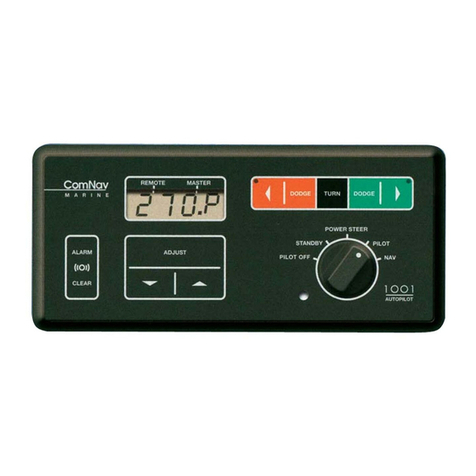
ComNav
ComNav 1001 Installation & operation manual
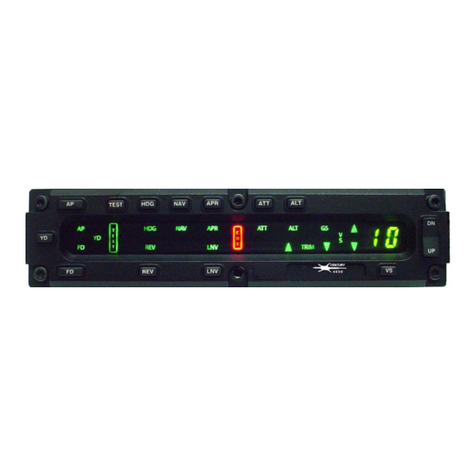
Century
Century 4000 Pilots operating manual
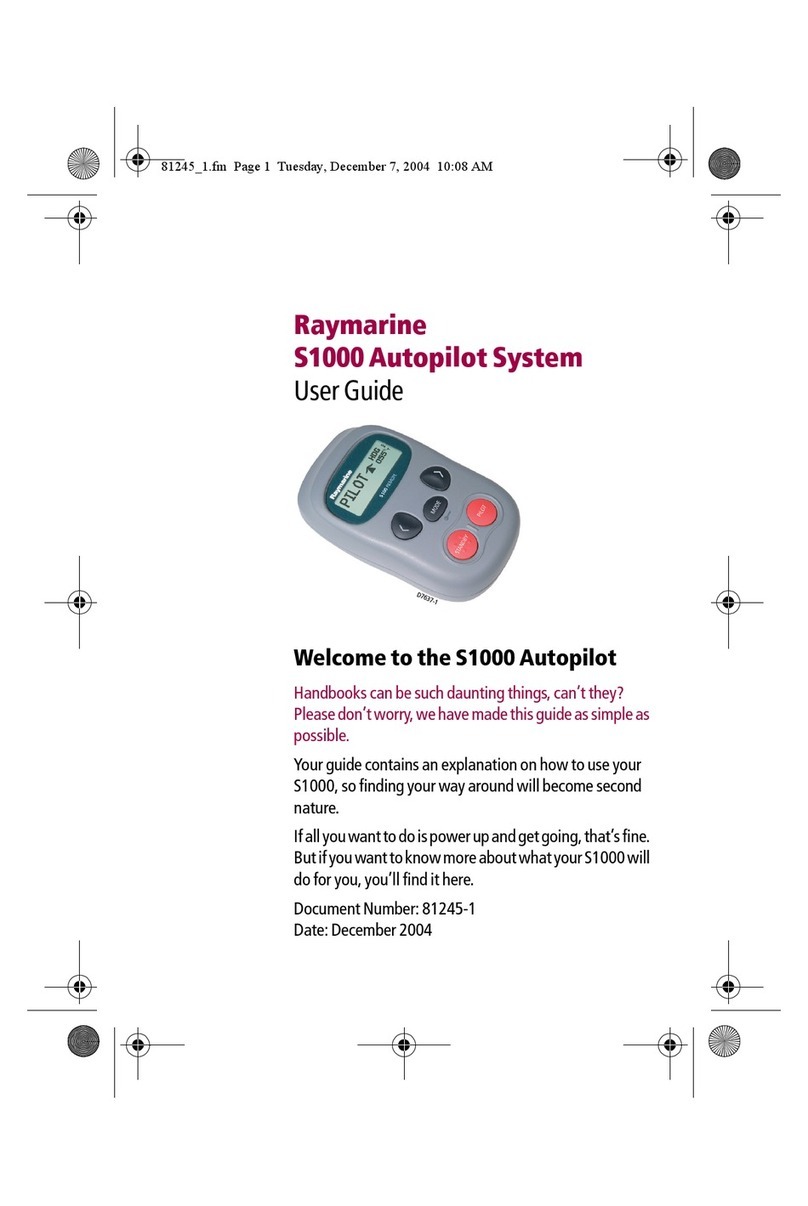
Raymarine
Raymarine SmartPilot S1000 user guide

AUTOHELM
AUTOHELM 1000 Installation and operating handbook
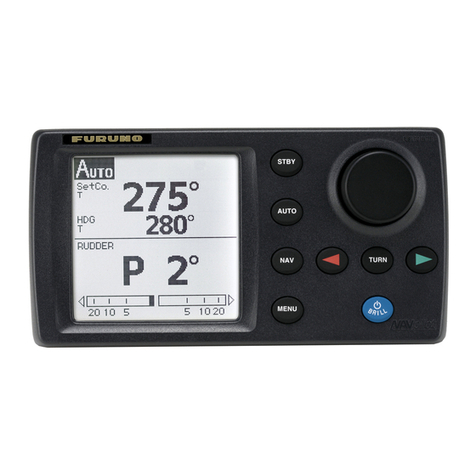
Furuno
Furuno NavPilot 700 PC Driver Install & Software Update Procedure
uAvionix
uAvionix tailBeaconX Getting started guide
